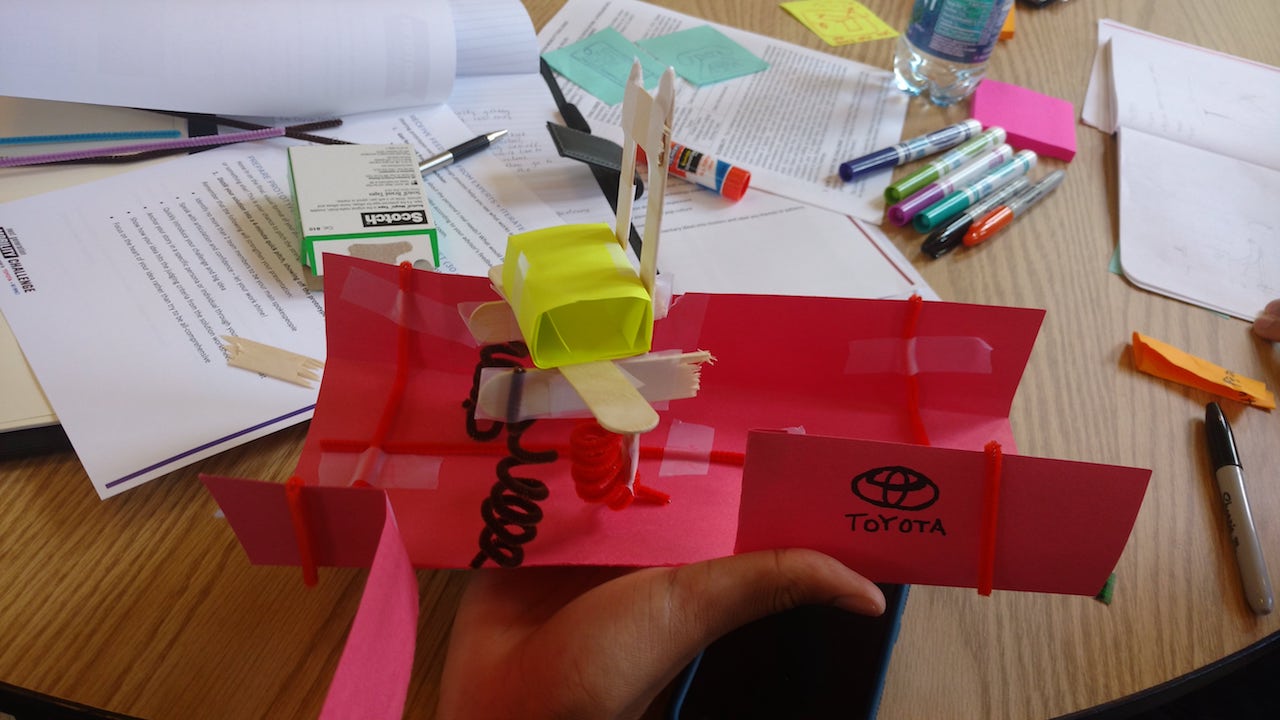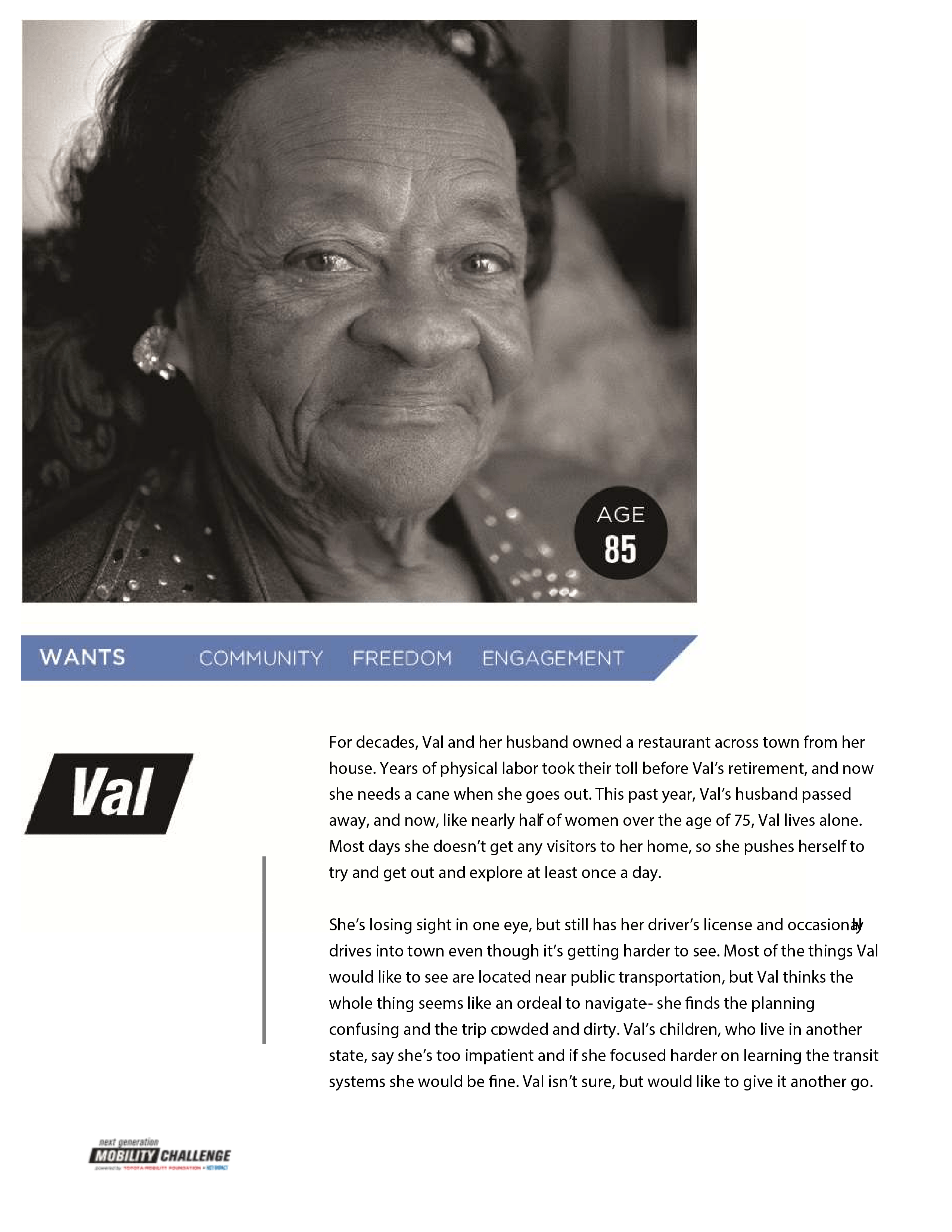Problem
Ideate and Prototype mobility solutions for problems in the travel industry.
Scope
The The Next Generation Mobility Challenge attempts to harness innovative thinking for the greater good in the domain on travel. Net Impact is a global community of students and professionals who aspire to be effective drivers of social and environmental change. This challenge was about how mobility solutions can serve everyone, especially the most socially vulnerable populations, characterized as people who have limited income to enjoy the freedom of mobility and people who have limited physical ability to be mobile at their discretion. I was among the 35 students shortlisted for the challenge among all the applications they received across universities. The groups were formed by Net Impact organizers ensuring a good mix of students. We were a team of four including a PHD in Chemical Engineering student, a BE in Mechanical Engineering student, a BE in Environmental Engineering student and myself pursuing MS in Human-Computer Interaction.
My Role
The challenge was all about employing Human Centered Design to come up with an innovative solution to current travel problems. I facilitated most of the design processes since I was knowledgeable about HCD approach. I was an active member in all discussions and contributed to each design decision.
Type Group Competition My Role UX Designer Timeline One Day Tools Used Human Centered Design approach, Physical Prototyping
What I learned
Rapid prototyping using available materials
Design Thinking
Practiced User Centered Design
Persona
The first step into the challenge was to select a persona. We selected ‘Val’, a 85 year old lady who likes to be independent and explore places around her. We selected Val as our persona because the aging population is increasing and mobility is one of the primary concern for them. There is not much supporting infrastructure avaialable for old people. Thus, this persona challenged us the most as a team and we started analyzing the persona to identify important characteristics.
Empathy Mapping
I facilitated the session of empathy mapping in our team. I first explained all the team members about empathy mapping which helped all team members to think in the right direction and contribute to the process. This process helped us build expectations from users standpoint. We identified following user requirements for Val:
- The solution should be easy to deploy widely.
- The solution should support current infrastructure for mobility
- It should allow Val to have a comfortable journey.
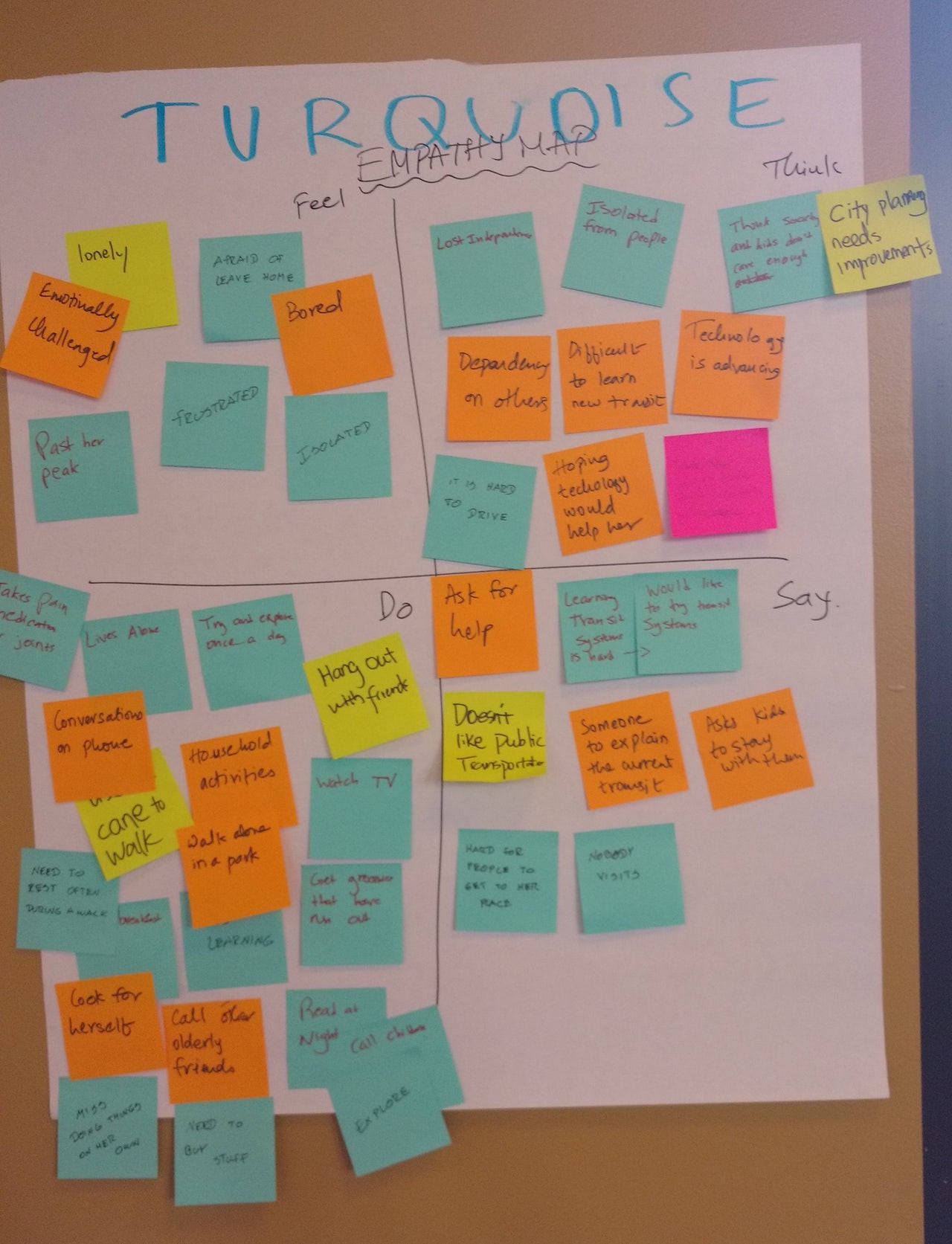
Empathy Map
User Journey
For this step, we first identified all the activities that are generic and old person might be interested in. This allowed us to identify typical day activities that Val would perform. We then analysed the user journey and emotions attached to each task. We identified the following points for emotion analysis:
- Dress up
- Walk to the car with the support of cane and use the support of the cane to get into the car
- Driving slowly to church
- While driving, other cars aggressively pass her and also honk a lot
- Since handicap parking near the church is full, she has to park far from church
- Use the support of cane to get out of the car
- Walk towards church
- Grab a seat

User Journey Map
Idea Generation and Selection
At this step we choose the 10-min madness approach and generated at least 20 ideas per person in 10 minutes. After 10 minutes, we started analysing each idea and clustered them into logically related categories. Then with mutual discussion we decided on which category to focus on and eventually voted the best idea they would like to prototype. The idea that we selected was for a seat that can be rotated and pulled out of the car so that it becomes more accessible for old people. This seat ensures that people with Arthritis and joint pains (most old people suffer from this) could easily get into a car. The chair should also have shock resistors and jelly type foam to absorb all the bounce caused due to bumps and cracks on the road.

Idea Coding
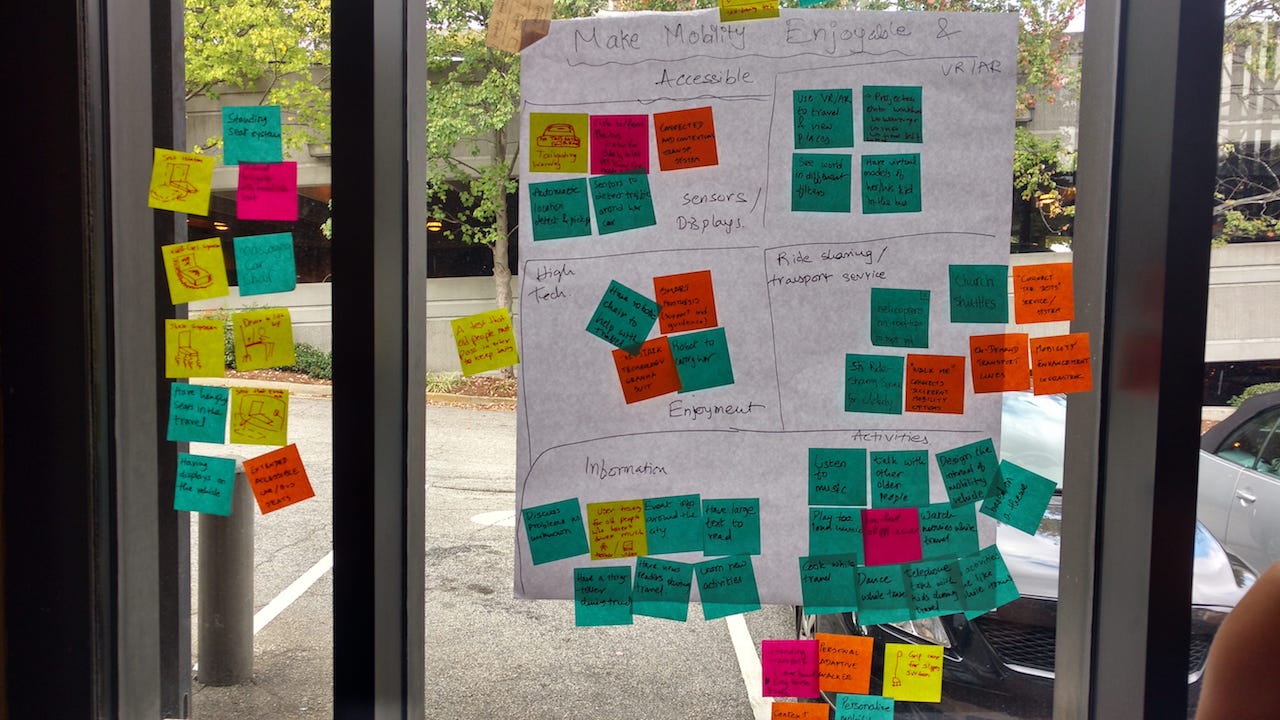
Idea Clustering and Voting
Prototype
We discussed more about how the product to function and its uses, and then started the prototyping process. Following is the storyboard I created so that it becomes easy for the team to visualize the product.
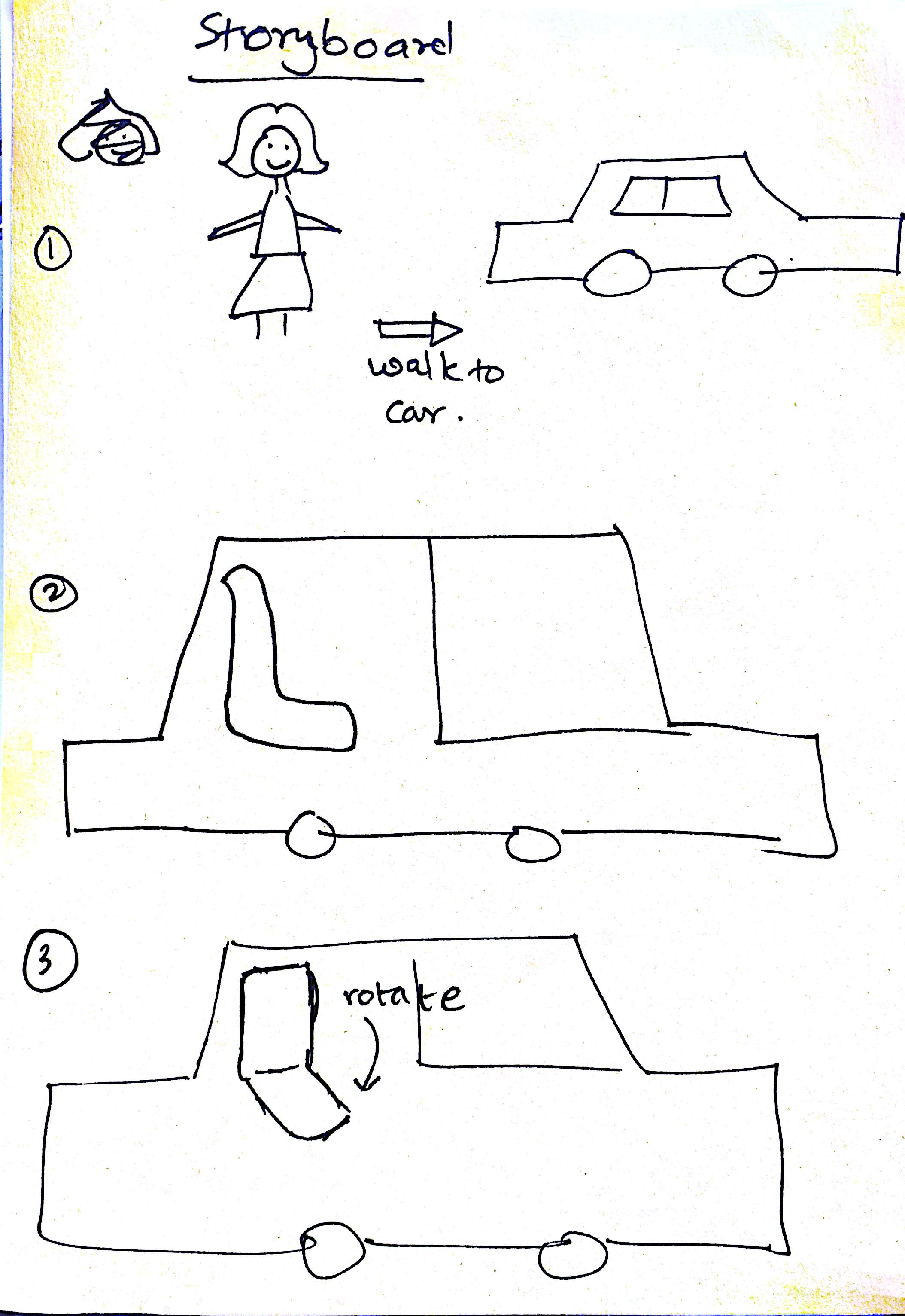
Storyboard

Storyboard Continued
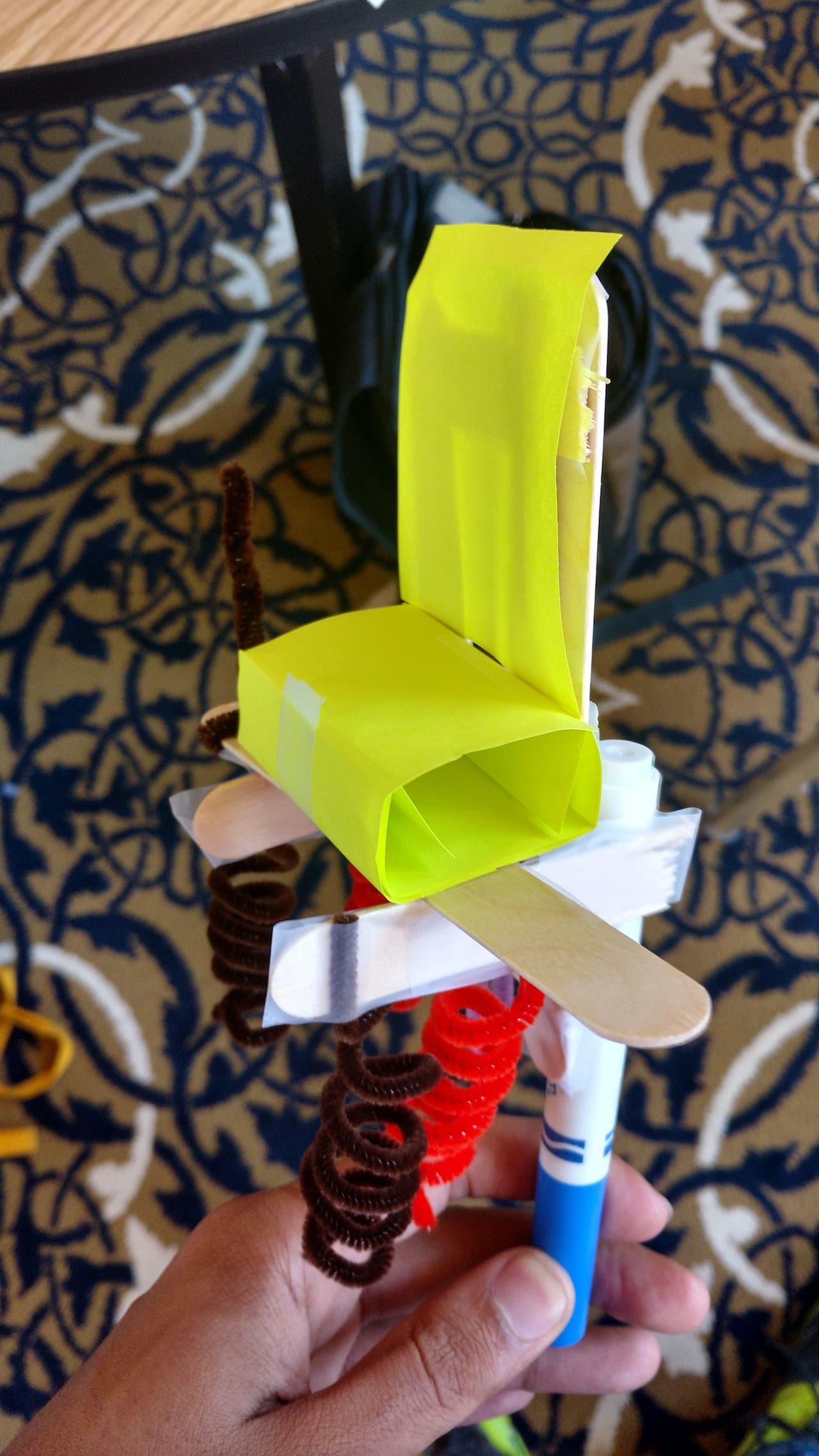
Chair Prototype
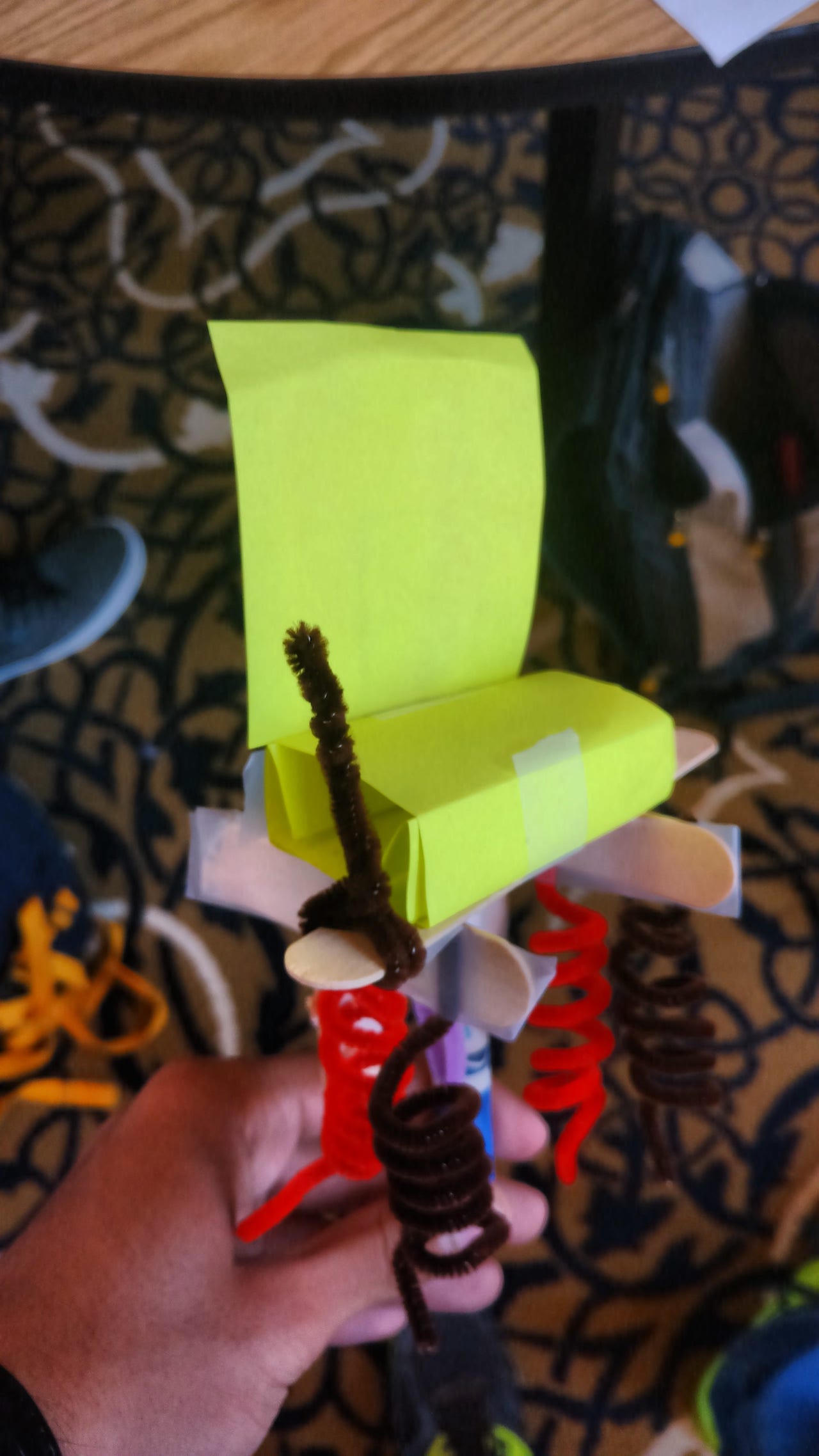
Chair Prototype
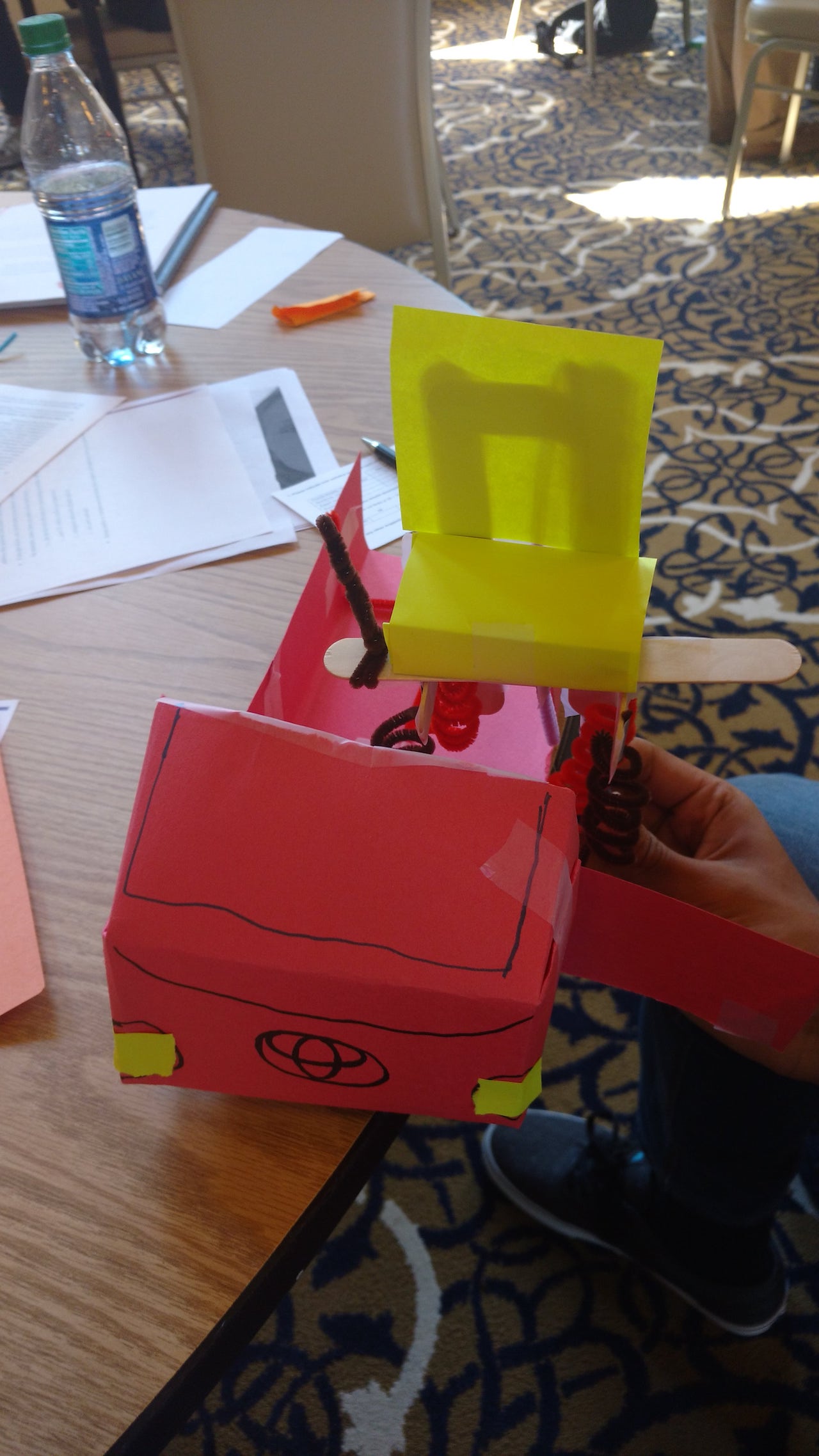
Chair Prototype with Car (Front View)
